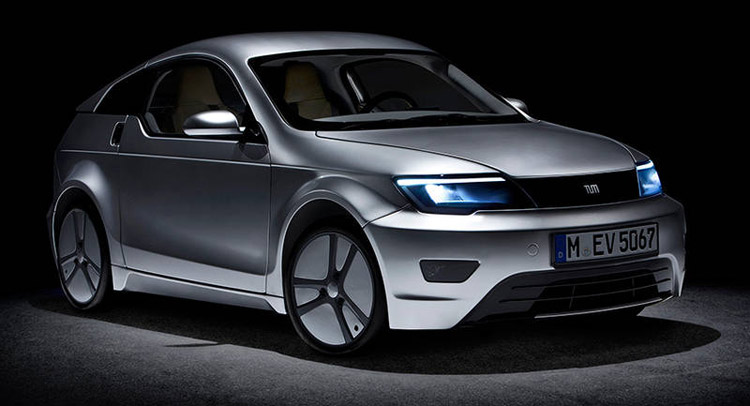Researchers at the Technische Universität München (TUM) and specialists from the auto industry have worked together on the Visio.M project, recently revealed in Germany.
Their goal was to build an “attractive electric vehicle at an affordable price that provides safety and comfort combined with a reasonable driving range,” according to the press release.
Funded by the German Federal Ministry of Education and Research with €7.1 million ($9 million), the Visio.M project took two and a half years to complete.
The very small EV (1.55m wide and 1.31m high) has a driving range of around 160 km (100 miles) and offers space for two people and luggage. Powered by a 15kW (20hp) electric motor which draws its energy from a 13.5 kWh lithium-ion battery mounted behind the seats, Visio.M can achieve a top speed of 120 km/h (75 mph) thanks in part to its low drag coefficient of 0.24.
The battery weighs almost 85 kg (187.4 lbs) and can be fully charged from a 230 V socket in only three to four hours. Researchers from TUM estimate the total cost of ownership, including initial investment and operating costs, will be lower than that of a comparable combustion engine car.
Visio.M uses lightweight materials such as carbon fiber reinforced plastic for the passenger compartment and the roof frame, and polycarbonate for all windows. Polycarbonate weighs only half as much as glass but thanks to a special coating it is equally resistant to scratches and weathering.
The researchers also saved weight in chassis, steering and transmission by using special light-weight constructions. The result is a curb weight of just 450 kilograms (992 lbs) without the battery – 535 kg (1,179 lbs) including the battery.
Safety wasn’t neglected either, with the Visio.M featuring a multi-section monocoque made of carbon fiber reinforced plastic combined with ultra light sandwich materials providing “exceptional rigidity.” The car is also equipped with a 360-degree monitoring system via radar and camera sensors which detects critical driving situations early on and activates the integrated passenger protection systems just before a crash takes place. Additionally, Visio.M includes structural airbags mounted in the bumpers and doors which act as additional absorption elements.
“With the Visio.M we have demonstrated that it is possible to build a very light and at the same time safe car with overall costs that we expect to be lower than those of comparable combustion-engine cars. But it is still a long way to serial production because almost all components must be adapted to the manufacturing conditions of large series,” said Prof. Markus Lienkamp, Chair of the TUM Institute of Automotive Technology.








